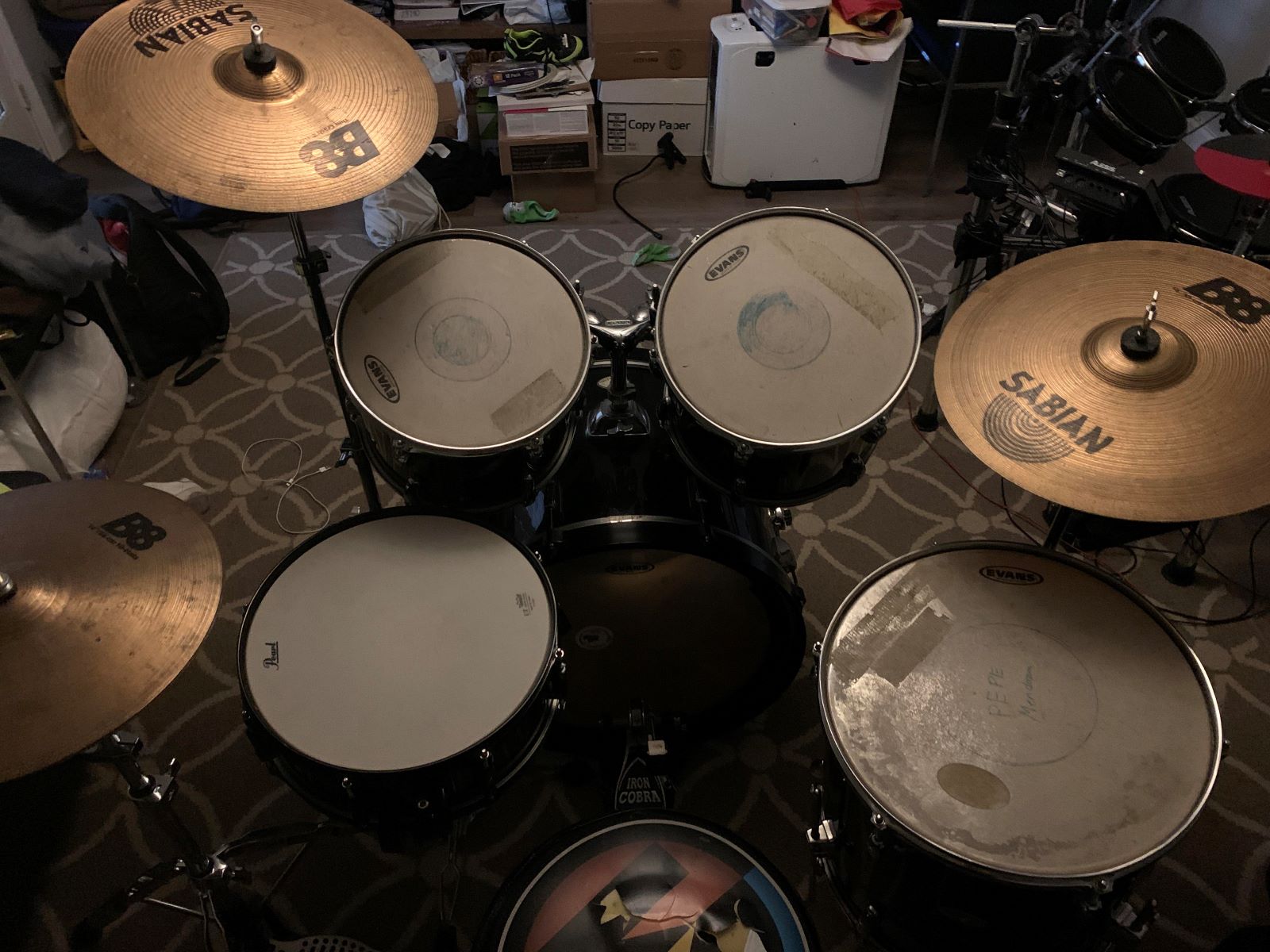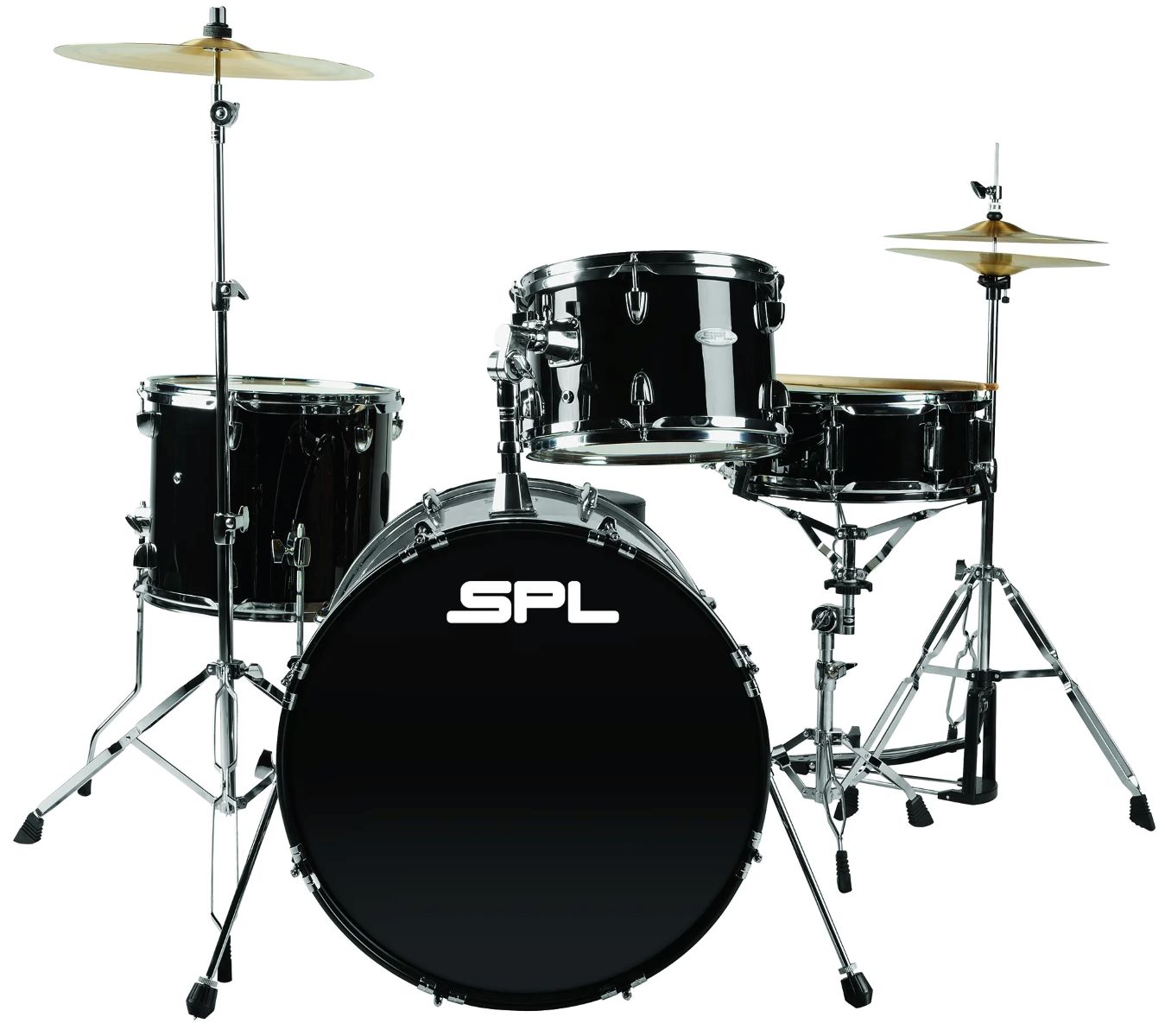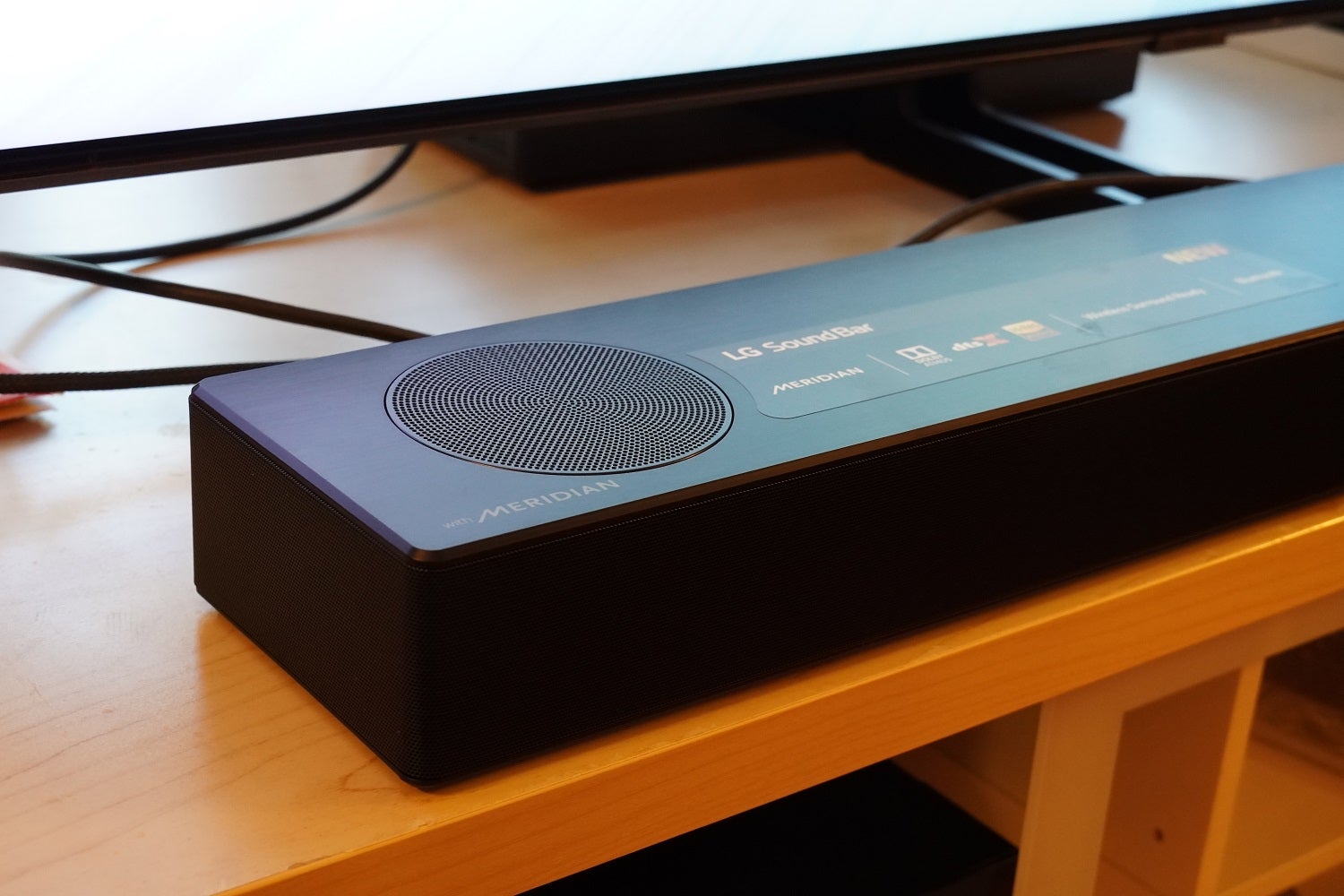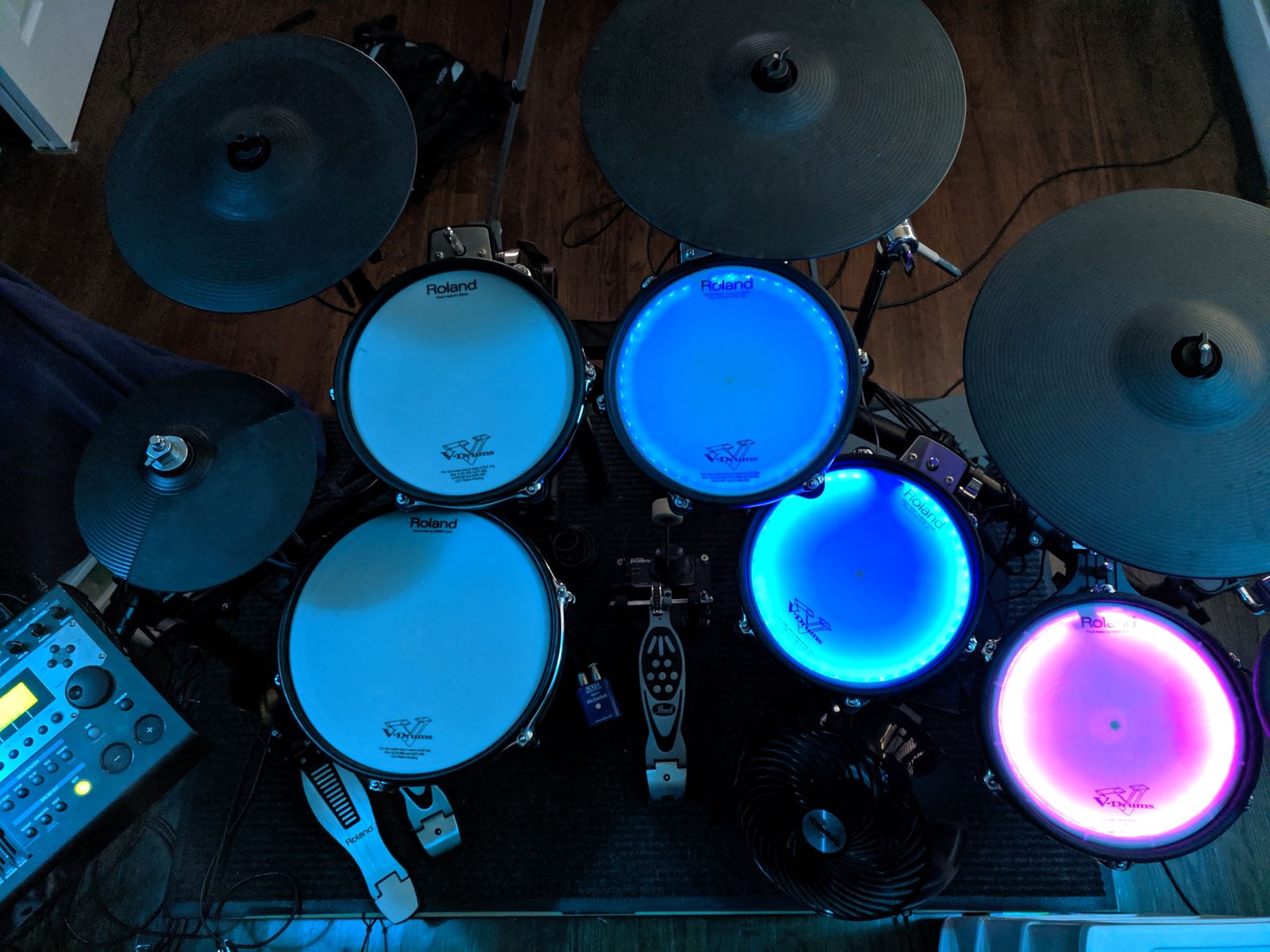Home>Instruments>Drums>How To Make My Drums Sound Better


Drums
How To Make My Drums Sound Better
Published: February 7, 2024
Learn how to improve the sound of your drums with expert tips and techniques. Enhance your drumming experience and achieve better results. Discover the secrets to better drum sound!
(Many of the links in this article redirect to a specific reviewed product. Your purchase of these products through affiliate links helps to generate commission for AudioLover.com, at no extra cost. Learn more)
Table of Contents
Introduction
So, you've been playing the drums for a while now, and you're looking for ways to take your sound to the next level. Whether you're a seasoned drummer or just starting out, there are several techniques and tools you can use to enhance the sound of your drums. From choosing the right drumheads to experimenting with different drumsticks, there are various avenues to explore in order to make your drums sound better.
The sound of your drums is influenced by a combination of factors, including the type of drumheads you use, the way you tune your drums, the techniques you employ to dampen the sound, and even the drumsticks you play with. Additionally, advancements in technology have made it possible to enhance your drum sound using electronic tools and gadgets.
In this article, we will delve into the various methods and strategies you can employ to make your drums sound better. Whether you're aiming for a punchy, aggressive sound or a warm, mellow tone, there are steps you can take to achieve the desired results. So, let's dive in and explore the world of drumming, where the quest for the perfect sound is a never-ending journey.
Choosing the Right Drumheads
When it comes to shaping the sound of your drums, the choice of drumheads plays a pivotal role. Drumheads come in various types, each offering distinct tonal characteristics and performance attributes. The two primary categories of drumheads are batter heads and resonant heads. Batter heads, also known as top heads, are the primary playing surface and have a significant impact on the attack, tone, and overall feel of the drum. Resonant heads, situated on the underside of the drum, contribute to the sustain and resonance of the instrument.
For drummers seeking a bright, open sound with enhanced resonance, single-ply drumheads are an excellent choice. These drumheads produce a lively, responsive feel and are well-suited for genres that require articulate and sensitive playing, such as jazz and acoustic settings. On the other hand, double-ply drumheads offer added durability and focus, making them ideal for heavier playing styles and genres that demand a controlled, powerful sound, such as rock and metal.
Furthermore, coated drumheads, featuring a thin layer of coating applied to the surface, produce a slightly warmer and drier sound compared to clear drumheads. The coating also imparts a textured feel and can help dampen overtones, resulting in a more focused sound. In contrast, clear drumheads offer a brighter and more open tonal quality, making them suitable for situations where projection and clarity are paramount.
It’s essential to consider the specific sonic characteristics and playing requirements of each drum within your kit when selecting drumheads. For instance, the snare drum may benefit from a coated batter head to control overtones and produce a well-defined backbeat, while the toms could be outfitted with clear, single-ply heads to achieve maximum resonance and sustain.
Ultimately, the process of choosing the right drumheads involves a balance of personal preference, playing style, and the sonic demands of the music you perform. By carefully selecting and experimenting with different drumheads, you can tailor the sound of your drums to align with your artistic vision and musical aspirations.
Tuning Your Drums
One of the most impactful ways to improve the sound of your drums is through proper tuning. Well-tuned drums not only enhance the overall tonal quality but also ensure consistency and resonance across the kit. The tuning process involves adjusting the tension of the drumheads to achieve specific pitches and harmonics, resulting in a balanced and cohesive sound.
Before diving into the tuning process, it’s crucial to understand the individual characteristics of each drum within your kit. The snare drum, for example, typically requires a higher pitch to deliver a crisp and cutting sound, while the toms are often tuned to produce a melodic and resonant quality that complements the overall musical arrangement. The bass drum, as the foundation of the rhythm section, can benefit from a well-defined and deep tone that provides a solid low-end presence.
When tuning your drums, it’s helpful to use a drum key to make precise and incremental adjustments to the tension rods. Start by tapping near the tension rods to identify any unevenness in pitch across the drumhead. Gradually tighten or loosen the tension rods in a crisscross pattern, ensuring that the tension is evenly distributed to avoid warping the drumhead. As you make adjustments, tap the drum at various points to gauge the changes in pitch and resonance, making fine-tuning adjustments as needed.
Experimenting with different tuning intervals can yield diverse tonal possibilities. For instance, tuning the batter and resonant heads of a tom to different pitches can create a melodic interval that adds depth and complexity to the drum’s sound. Additionally, tuning the resonant head slightly higher than the batter head can enhance sustain and projection, while tuning both heads to the same pitch can yield a focused and punchy sound.
Furthermore, exploring alternative tuning methods, such as the use of drum tuners or tension watch devices, can provide precise measurements and aid in achieving consistent tuning across multiple drums. These tools can be particularly beneficial for drummers seeking meticulous control over their drum sound, especially in recording or performance settings where sonic precision is paramount.
By dedicating time to the art of drum tuning and honing your ability to discern subtle pitch variations, you can unlock the full sonic potential of your drum kit, allowing your playing to shine with clarity, expressiveness, and musicality.
Using Dampening Techniques
Controlling the resonance and sustain of your drums is essential for achieving a well-defined and focused sound. Dampening techniques offer an effective way to manage the overtones and sustain of your drums, allowing you to tailor the sound to suit different musical contexts and personal preferences. Whether you’re aiming for a tight and punchy sound or a more open and resonant quality, employing dampening methods can significantly impact the overall character of your drum sound.
One of the most common dampening techniques involves the use of dampening rings or gels, which are placed on the drumheads to reduce unwanted overtones and sustain. These accessories come in various sizes and materials, allowing drummers to customize the degree of dampening according to their specific tonal requirements. By strategically positioning dampening rings or gels on the drumheads, you can achieve a more controlled and focused sound, particularly useful in genres that demand precision and articulation, such as funk and pop music.
Another popular dampening method involves the use of drumhead muffling products, such as foam or fabric strips, which are placed inside the drum shell to dampen the resonance and lower the overall volume. This approach is especially beneficial for achieving a tight and dry sound, commonly sought after in studio recording environments where a clean and controlled drum sound is desired.
For drummers seeking a more organic and versatile approach to dampening, experimenting with household items such as cotton balls, moongel, or even small towels can yield unique and customizable dampening effects. By strategically placing these items on the drumheads or inside the drum shell, you can fine-tune the sustain and tonal characteristics to align with your artistic vision and musical style.
It’s important to note that while dampening techniques can offer valuable sonic control, it’s essential to strike a balance to avoid over-dampening the drums, which can result in a stifled and unnatural sound. By approaching dampening as a nuanced and creative tool rather than a one-size-fits-all solution, you can harness its potential to sculpt your drum sound with precision and artistry.
Ultimately, mastering the art of dampening allows you to shape the tonal palette of your drums, providing you with the flexibility to adapt to diverse musical settings and express your unique voice as a drummer.
Experimenting with Different Drumsticks
Drumsticks are not one-size-fits-all tools; they come in a variety of sizes, materials, and tip shapes, each contributing to the overall sound and feel of your playing. As a drummer, exploring different types of drumsticks can offer a transformative experience, allowing you to fine-tune your technique and tailor your sound to match diverse musical styles and performance settings.
One of the primary considerations when selecting drumsticks is the material. Drumsticks are commonly crafted from hickory, maple, oak, and synthetic materials such as carbon fiber or aluminum. Each material imparts distinct characteristics to the drumsticks, influencing factors such as weight, durability, and response. For instance, hickory drumsticks are revered for their balance of strength and flexibility, making them suitable for a wide range of playing styles, while maple drumsticks offer a lighter feel and enhanced articulation, ideal for nuanced and dynamic playing.
Furthermore, the tip shape of drumsticks plays a crucial role in shaping the sound and attack of the drums. Drumsticks are available with round tips, barrel tips, acorn tips, and more, each offering unique tonal properties and cymbal response. Drummers seeking a bright and articulate cymbal sound may prefer drumsticks with a small, round tip, while those aiming for a full and robust drum tone may opt for sticks with a larger, barrel-shaped tip.
Additionally, experimenting with different stick sizes and dimensions can have a profound impact on your playing technique and sound production. Thicker and heavier drumsticks provide increased power and projection, making them suitable for genres that require a strong and commanding presence, such as rock and metal. Conversely, lighter and thinner drumsticks offer enhanced speed and agility, making them well-suited for intricate and nuanced playing styles, including jazz and orchestral percussion.
As you explore the vast array of drumsticks available, consider the sonic and ergonomic aspects of each pair, taking into account how they complement your playing technique and musical expression. By embracing the diversity of drumsticks and incorporating them into your creative arsenal, you can unlock new dimensions of musicality and expand the sonic possibilities of your drumming.
Enhancing Your Drum Sound with Electronics
In the realm of modern drumming, electronic tools and gadgets offer an array of possibilities for expanding and enhancing the sonic palette of your drums. Whether you’re looking to add electronic elements to your acoustic setup or delve into the realm of electronic drum kits, integrating electronics into your drum sound opens up a world of creative potential and sonic exploration.
One popular avenue for augmenting acoustic drums with electronic elements is the use of drum triggers. These devices are attached to the drumheads and convert the physical impact of the drumsticks into electronic signals, allowing you to trigger additional sounds, samples, or effects. By incorporating drum triggers into your setup, you can expand the sonic range of your drums, layer electronic textures alongside acoustic tones, and create hybrid drum sounds that defy traditional categorization.
Furthermore, electronic drum pads and percussion controllers offer versatile options for adding electronic sounds and effects to your performances. These pads can be integrated into your drum kit, providing access to a diverse array of electronic samples, loops, and soundscapes that can be seamlessly blended with your acoustic drumming. This fusion of acoustic and electronic elements enables you to craft intricate and immersive sonic landscapes, ideal for genres that embrace innovation and experimentation, such as electronic music and fusion genres.
For drummers seeking a comprehensive electronic drumming experience, electronic drum kits offer a compelling solution. These kits feature electronic pads and cymbals that generate sound through digital processing, providing a dynamic and customizable platform for shaping and sculpting your drum sound. Electronic drum kits offer a wealth of built-in sounds, effects, and performance features, empowering drummers to explore new sonic territories and push the boundaries of traditional drumming conventions.
Moreover, the integration of electronic effects pedals and processors can add depth and texture to your drum sound, allowing you to apply reverbs, delays, and modulations to create immersive sonic environments. These effects can enhance the spatial dimension of your drumming, infusing your performances with a sense of ambiance and depth that transcends the confines of traditional acoustic drum sounds.
By embracing the symbiotic relationship between acoustic and electronic elements, you can embark on a sonic journey that blurs the lines between traditional drumming and electronic music production, expanding your creative horizons and redefining the possibilities of drum sound in the digital age.
Conclusion
As a drummer, the quest for the perfect sound is an ongoing journey marked by exploration, experimentation, and creativity. By delving into the realm of drumheads, tuning techniques, dampening methods, drumstick selection, and electronic enhancements, you have the power to shape and refine the sonic identity of your drumming, unlocking new dimensions of expressiveness and artistry.
Choosing the right drumheads lays the foundation for your drum sound, allowing you to tailor the tonal characteristics to suit your musical preferences and playing style. Whether you opt for single-ply heads for enhanced resonance or double-ply heads for added durability and focus, the choice of drumheads significantly influences the overall sound and feel of your drums.
Mastering the art of drum tuning empowers you to achieve precise pitches and harmonics across your kit, ensuring a balanced and cohesive sound that resonates with clarity and musicality. By honing your tuning skills, you can unleash the full sonic potential of your drums, allowing your playing to shine with expressiveness and nuance.
Employing dampening techniques provides valuable sonic control, allowing you to manage the resonance and sustain of your drums with precision and artistry. Whether you opt for dampening rings, muffling products, or innovative household items, the strategic application of dampening methods enables you to sculpt your drum sound to align with diverse musical contexts and personal preferences.
Exploring the diverse world of drumsticks offers a transformative experience, enabling you to fine-tune your technique and tailor your sound to match different musical styles and performance settings. By embracing the sonic and ergonomic possibilities of various drumsticks, you can expand the expressive range of your drumming and unlock new dimensions of musicality.
Finally, the integration of electronic tools and gadgets opens up a world of creative potential, allowing you to expand and enhance the sonic palette of your drums. Whether through the use of triggers, electronic pads, or comprehensive electronic drum kits, the fusion of acoustic and electronic elements provides a platform for innovation and sonic exploration that transcends traditional boundaries.
In the dynamic and ever-evolving landscape of drumming, the pursuit of a better drum sound is a testament to your dedication to the craft and your commitment to artistic excellence. By embracing the techniques and tools at your disposal, you are poised to embark on a sonic journey that transcends convention, paving the way for new sonic frontiers and unparalleled musical expression.











